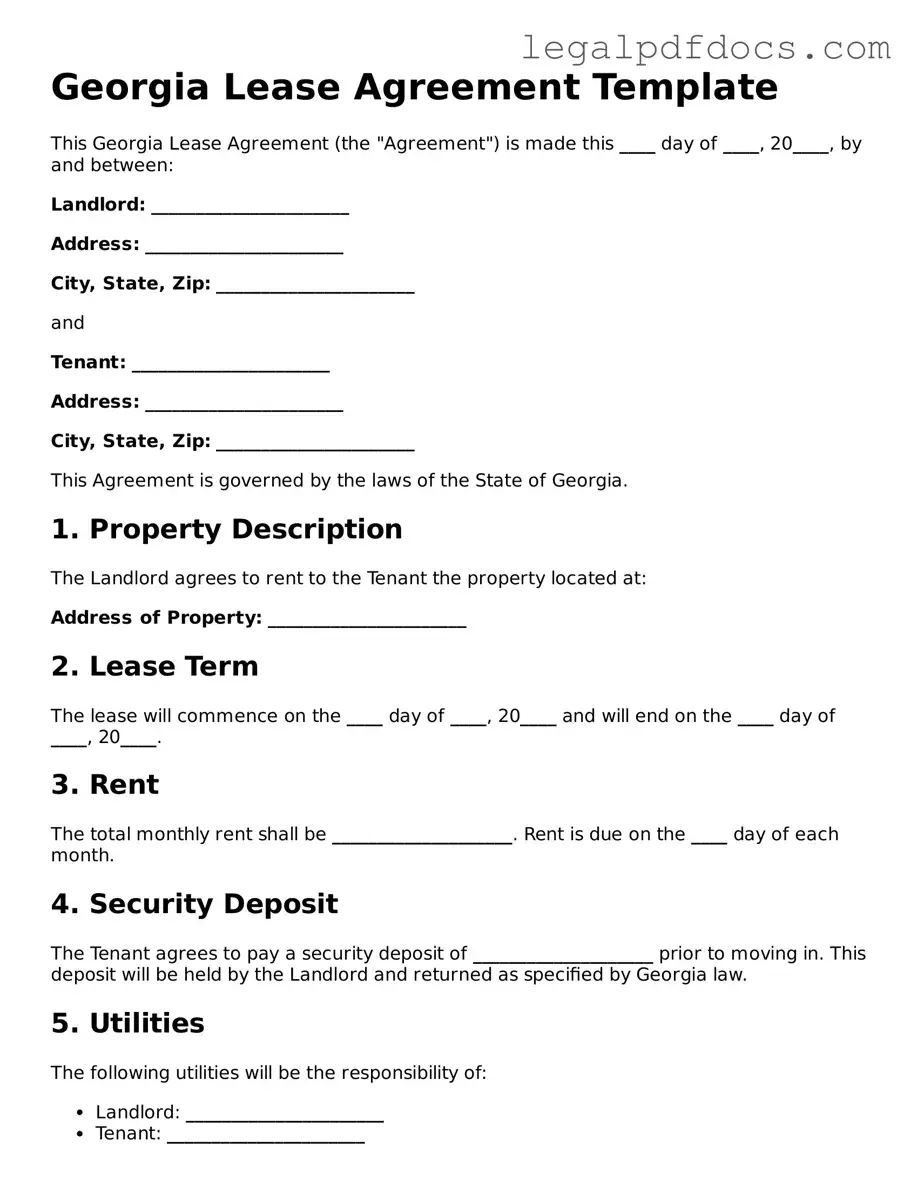Official Lease Agreement Form for Georgia
A Georgia Lease Agreement form is a legal document that outlines the terms and conditions between a landlord and a tenant regarding the rental of residential or commercial property. This form serves to protect the rights of both parties and ensures clarity in the rental arrangement. To get started on your lease, fill out the form by clicking the button below.
Open Lease Agreement Editor Here
